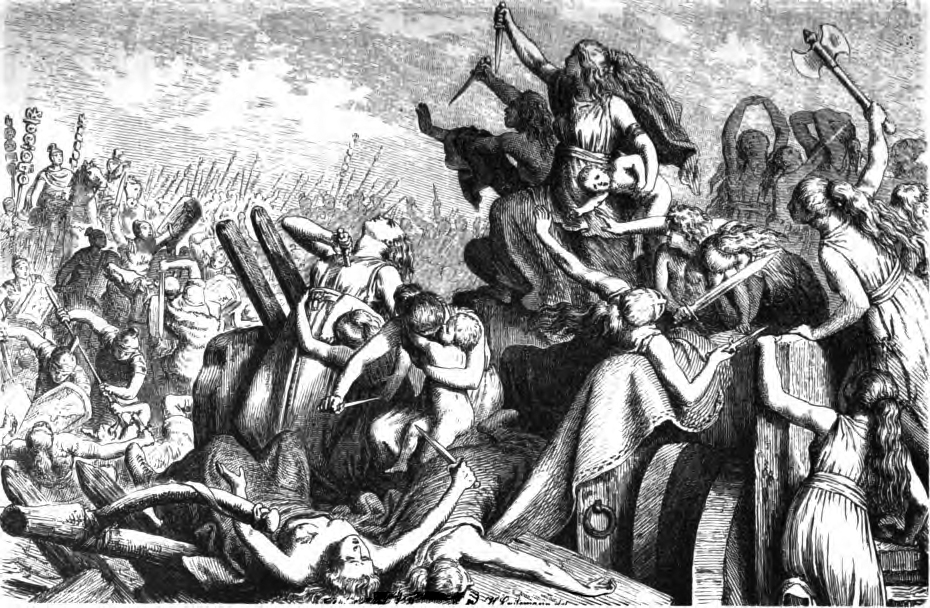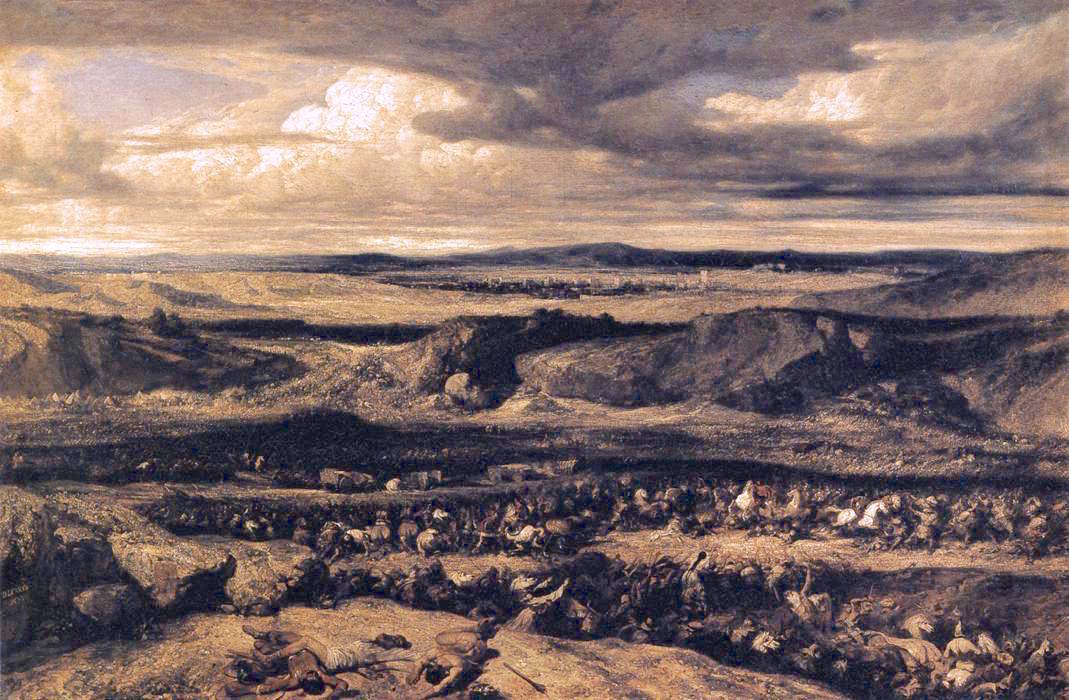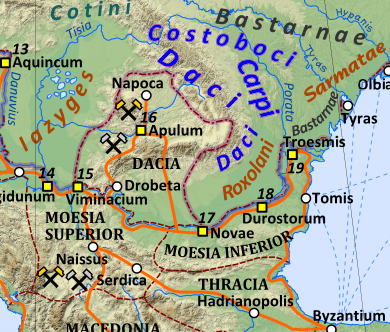|
Ingvaeones
The Ingaevones were a West Germanic cultural group living in the Northern Germania along the North Sea coast in the areas of Jutland, Holstein, and Frisia in classical antiquity. Tribes in this area included the Angles, Frisii, Chauci, Saxons, and Jutes. The name is sometimes given by modern editors or translators as Ingvaeones, on the assumption that this is more likely to be the correct form, since an etymology can be formed for it as 'son of Yngvi', Yngvi occurring later as a Scandinavian divine name. Hence the postulated common group of closely related dialects of the "Ingvaeones" is called Ingvaeonic or ''North Sea Germanic''. Tacitus' source categorized the ''Ingaevones near the ocean'' as one of the three tribal groups descended from the three sons of Mannus, son of Tuisto, progenitor of all the Germanic peoples, the other two being the ''Irminones'' and the ''Istaevones''. According to the speculations of Rafael von Uslar, this threefold subdivision of the West Germanic ... [...More Info...] [...Related Items...] OR: [Wikipedia] [Google] [Baidu] |
Yngvi
Old Norse Yngvi , Old High German Ing/Ingwi and Old English Ingƿine are names that relate to a theonym which appears to have been the older name for the god Freyr. Proto-Germanic *Ingwaz was the legendary ancestor of the Ingaevones, or more accurately ''Ingvaeones'', and is also the reconstructed name of the Elder Futhark rune ᛜ and Anglo-Saxon rune ᛝ, representing '' ŋ''. A torc, the so-called "Ring of Pietroassa", part of a late third to fourth century Gothic hoard discovered in Romania, is inscribed in much-damaged runes, one reading of which is ''gutanī (ng)i hailag'' "to Ingwi of the Goths holy". Etymology Old Norse ''Yngvi'' as well as Old High German ''Inguin'' and Old English ''Ingƿine'' are all derived from the Proto-Germanic *Ingwaz. Sound changes in late-Proto-Germanic transformed *Ingwaz into *Ingwi(z) in the nominative case and *''Ingwin'' in the accusative case. His epithet *Fraujaz appears in Old Norse compounds ''Ingvifreyr'' and ''Ingunarfreyr''. In B ... [...More Info...] [...Related Items...] OR: [Wikipedia] [Google] [Baidu] |
Germanic Peoples
The Germanic peoples were historical groups of people that once occupied Central Europe and Scandinavia during antiquity and into the early Middle Ages. Since the 19th century, they have traditionally been defined by the use of ancient and early medieval Germanic languages and are thus equated at least approximately with Germanic-speaking peoples, although different academic disciplines have their own definitions of what makes someone or something "Germanic". The Romans named the area belonging to North-Central Europe in which Germanic peoples lived ''Germania'', stretching East to West between the Vistula and Rhine rivers and north to south from Southern Scandinavia to the upper Danube. In discussions of the Roman period, the Germanic peoples are sometimes referred to as ''Germani'' or ancient Germans, although many scholars consider the second term problematic since it suggests identity with present-day Germans. The very concept of "Germanic peoples" has become the subject of ... [...More Info...] [...Related Items...] OR: [Wikipedia] [Google] [Baidu] |
Mannus
Mannus, according to the Roman writer Tacitus, was a figure in the creation Germanic mythology, myths of the Germanic tribes. Tacitus is the only source of these myths. Tacitus wrote that Mannus was the son of Tuisto and the progenitor of the three Germanic tribes Ingaevones, Irminones, Herminones and Istvaeones. In discussing the German tribes Tacitus wrote: Several authors consider the name ''Mannus'' in Tacitus's work to stem from an Indo-European language, Indo-European root; see Indo-European cosmogony#Linguistic_evidence, Indo-European cosmogony § Linguistic evidence. The Latinized name ''Mannus'' is evidently of some relation to Proto-Germanic ''*Mannaz'', "man". Mannus again became popular in literature in the 16th century, after works published by Annius de Viterbo and Johannes Aventinus purported to list him as a primeval king over Germany and Sarmatia. In the 19th century, F. Nork wrote that the names of the three sons of Mannus can be extrapolated as Ingui, Irmi ... [...More Info...] [...Related Items...] OR: [Wikipedia] [Google] [Baidu] |
Teutons
The Teutons ( la, Teutones, , grc, Τεύτονες) were an ancient northern European tribe mentioned by Roman authors. The Teutons are best known for their participation, together with the Cimbri and other groups, in the Cimbrian War with the Roman Republic in the late second century BC. Julius Caesar described them as a Germanic people, a term he applied to all northern peoples located east of the Rhine, and later Roman authors followed him. On one hand, there is no direct evidence that they spoke a Germanic language, and evidence such as their name, and the names of their rulers, indicates at least a strong influence from Celtic languages. On the other hand the indications that classical authors gave about the homeland of the Teutones is considered by many scholars to show that they lived in an area associated with early Germanic languages, and not Celtic languages. Name The ethnonym is attested in Latin as ''Teutonēs'' or ''Teutoni'' (plural) or, more rarely, as ''Teut ... [...More Info...] [...Related Items...] OR: [Wikipedia] [Google] [Baidu] |
Irminones
The Irminones, also referred to as Herminones or Hermiones ( grc, Ἑρμίονες), were a large group of early Germanic tribes settling in the Elbe watershed and by the first century AD expanding into Bavaria, Swabia and Bohemia. Notably this included the large sub-group of the Suevi, that itself contained many different tribal groups, but the Irminones also for example included the Chatti. The term Irminonic is also therefore used as a term for Elbe Germanic, which is one of the proposed (but unattested) dialect groups ancestral to the West Germanic language family, especially the High German languages, which include modern Standard German. History of use Classical The name Irminones or Hermiones comes from Tacitus's ''Germania'' (AD 98), where he categorized them as one of the tribes that some people say were descended from Mannus, and noted that they lived in the interior of Germania. Other Germanic groups of tribes were the Ingvaeones, living on the coast, and Istvaeone ... [...More Info...] [...Related Items...] OR: [Wikipedia] [Google] [Baidu] |
Hrothgar
Hrothgar ( ang, Hrōðgār ; on, Hróarr) was a semi-legendary Danish king living around the early sixth century AD. Hrothgar appears in the Anglo-Saxon epics ''Beowulf'' and ''Widsith'', in Norse sagas and poems, and in medieval Danish chronicles. In both Anglo-Saxon and Scandinavian tradition, Hrothgar is a Scylding, the son of Halfdan, the brother of Halga, and the uncle of Hrólfr Kraki. Moreover, in both traditions, the mentioned characters were the contemporaries of the Swedish king Eadgils; and both traditions also mention a feud with men named Fróði and Ingeld. The consensus view is that Anglo-Saxon and Scandinavian traditions describe the same person. Names Hrothgar, also rendered ''Hrōðgār'', is an Old English form attested in ''Beowulf'' and ''Widsith'', the earliest sources to mention the character. In non-English sources, the name appears in more or less corresponding Old Icelandic, Old Danish, and Latinized versions. He appears as ''Hróarr'', ''Hroar'', ... [...More Info...] [...Related Items...] OR: [Wikipedia] [Google] [Baidu] |
Beowulf
''Beowulf'' (; ang, Bēowulf ) is an Old English epic poem in the tradition of Germanic heroic legend consisting of 3,182 alliterative lines. It is one of the most important and most often translated works of Old English literature. The date of composition is a matter of contention among scholars; the only certain dating is for the manuscript, which was produced between 975 and 1025. Scholars call the anonymous author the "''Beowulf'' poet". The story is set in pagan Scandinavia in the 6th century. Beowulf, a hero of the Geats, comes to the aid of Hrothgar, the king of the Danes, whose mead hall in Heorot has been under attack by the monster Grendel. After Beowulf slays him, Grendel's mother attacks the hall and is then defeated. Victorious, Beowulf goes home to Geatland and becomes king of the Geats. Fifty years later, Beowulf defeats a dragon, but is mortally wounded in the battle. After his death, his attendants cremate his body and erect a tower on a headland in ... [...More Info...] [...Related Items...] OR: [Wikipedia] [Google] [Baidu] |
Cimbri
The Cimbri (Greek Κίμβροι, ''Kímbroi''; Latin ''Cimbri'') were an ancient tribe in Europe. Ancient authors described them variously as a Celtic people (or Gaulish), Germanic people, or even Cimmerian. Several ancient sources indicate that they lived in Jutland, which in some classical texts was called the Cimbrian peninsula. There is no direct evidence for the language they spoke, though some scholars argue that it must have been a Germanic language, while others argue that it must have been Celtic. Together with the Teutones and the Ambrones, they fought the Roman Republic between 113 and 101 BC during the Cimbrian War. The Cimbri were initially successful, particularly at the Battle of Arausio, in which a large Roman army was routed. They then raided large areas in Gaul and Hispania. In 101 BC, during an attempted invasion of the Italian peninsula, the Cimbri were decisively defeated at the Battle of Vercellae by Gaius Marius, and their king, Boiorix, was killed. So ... [...More Info...] [...Related Items...] OR: [Wikipedia] [Google] [Baidu] |
Bastarnae
The Bastarnae (Latin variants: ''Bastarni'', or ''Basternae''; grc, Βαστάρναι or Βαστέρναι) and Peucini ( grc, Πευκῖνοι) were two ancient peoples who between 200 BC and 300 AD inhabited areas north of the Roman frontier on the Lower Danube. The Bastarnae lived in the region between the Carpathian Mountains and the river Dnieper, to the north and east of ancient Dacia. The Peucini occupied the region north of the Danube Delta. The earliest Graeco-Roman historians to refer to the Bastarnae imply that they spoke Celtic languages. In contrast, later historical sources imply that they spoke Germanic languages, and could be considered Germanic peoples. Like other peoples who lived in the same geographical region, Graeco-Roman writers also referred to the Bastarnae as a "Scythian" people, but this was probably a reference to their general way of life, rather than a linguistic category. Although largely sedentary, some elements may have adopted a semi-nomadi ... [...More Info...] [...Related Items...] OR: [Wikipedia] [Google] [Baidu] |
Istvaeones
The Istaevones (also spelled Istvaeones) were a Germanic group of tribes living near the banks of the Rhine during the Roman Empire which reportedly shared a common culture and origin. The Istaevones were contrasted to neighbouring groups, the Ingaevones on the North Sea coast, and the Herminones, living inland of these groups. In linguistics, the term " Istvaeonic languages" is also sometimes used in discussions about the grouping of the northwestern West Germanic languages, consisting of Frankish and its descendants (principally Old Dutch) as well as several closely related historical dialects. Whether or not the Istvaeones spoke a Germanic language according to modern definitions, the theory proposes that their language indirectly influenced later Germanic languages in the area as a substrate. Nomenclature The term ''Istvaeonic'' is derived from a culturo-linguistic grouping of Germanic tribes mentioned by Tacitus, who used the spelling "''Istæuones''" in his ''Germania'', ... [...More Info...] [...Related Items...] OR: [Wikipedia] [Google] [Baidu] |
Vandals
The Vandals were a Germanic peoples, Germanic people who first inhabited what is now southern Poland. They established Vandal Kingdom, Vandal kingdoms on the Iberian Peninsula, Mediterranean islands, and North Africa in the fifth century. The Vandals migrated to the area between the lower Oder and Vistula rivers in the second century BC and settled in Silesia from around 120 BC. They are associated with the Przeworsk culture and were possibly the same people as the Lugii. Expanding into Roman Dacia, Dacia during the Marcomannic Wars and to Pannonia during the Crisis of the Third Century, the Vandals were confined to Pannonia by the Goths around 330 AD, where they received permission to settle from Constantine the Great. Around 400, raids by the Huns from the east forced many Germanic tribes to migrate west into the territory of the Roman Empire and, fearing that they might be targeted next, the Vandals were also pushed westwards, Crossing of the Rhine, crossing the Rhine in ... [...More Info...] [...Related Items...] OR: [Wikipedia] [Google] [Baidu] |
Natural History (Pliny)
The ''Natural History'' ( la, Naturalis historia) is a work by Pliny the Elder. The largest single work to have survived from the Roman Empire to the modern day, the ''Natural History'' compiles information gleaned from other ancient authors. Despite the work's title, its subject area is not limited to what is today understood by natural history; Pliny himself defines his scope as "the natural world, or life". It is encyclopedic in scope, but its structure is not like that of a modern encyclopedia. It is the only work by Pliny to have survived, and the last that he published. He published the first 10 books in AD 77, but had not made a final revision of the remainder at the time of his death during the AD 79 eruption of Vesuvius. The rest was published posthumously by Pliny's nephew, Pliny the Younger. The work is divided into 37 books, organised into 10 volumes. These cover topics including astronomy, mathematics, geography, ethnography, anthropology, human physiolog ... [...More Info...] [...Related Items...] OR: [Wikipedia] [Google] [Baidu] |







